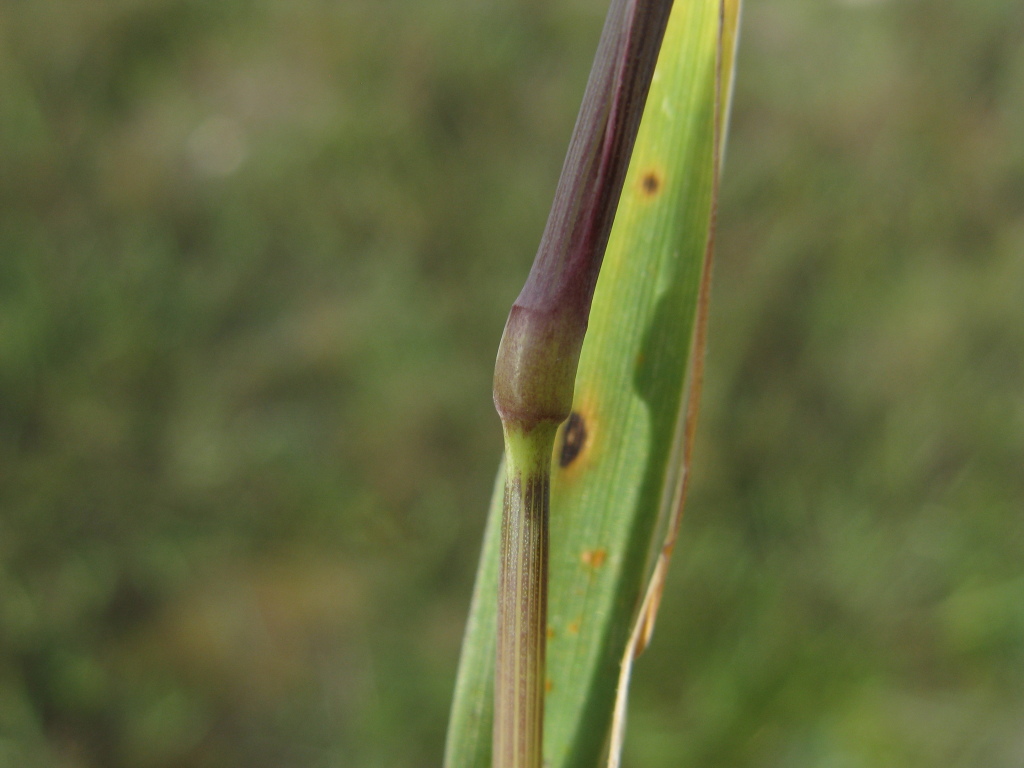Hordeum glaucum
Steud. Northern Barley GrassTufted annual, culms erect or geniculate, to 50 cm high. Leaves glabrous or sparsely hairy; blade flat, commonly glaucous, 4–15 cm long and 2–8 mm wide; ligule membranous, 0.5–1 mm long; auricles usually present, falcate, partially encircling stem. Inflorescence a dense cylindrical spike 3–10 cm long; article of rachis on which the triad of florets are united c. 2 mm long. Glumes subequal, 18–30 mm long, those of the bisexual central spikelet and inner glume of male lateral spikelets lanceolate, ciliate; outer glumes of lateral spikelets subulate; lemma of central spikelet 7–11 mm long, smooth or scabrous, with a straight terminal awn 18–35 mm long; lemma of lateral spikelets resembling that of central spikelet but longer, awns subequal to or longer than those of central floret; palea slightly shorter than body of lemma; anthers of the central floret 0.2–0.5 mm long, usually blackish, less than half as long as those of lateral florets. Flowers all year but mainly Sep.–Nov.
LoM, MuM, Wim, VVP, VRiv, MSB, RobP, MuF, GipP, OtP, WaP, Gold, CVU, EGL, EGU, HSF, HNF, Strz. Naturalised in all States. In Victoria, mostly confined to drier north and west, with isolated occurrences near Melbourne and in the rain shadow areas to the east, e.g. Benambra, Suggan Buggan.
Walsh, N.G. (1994). Poaceae. In: Walsh, N.G.; Entwisle, T.J., Flora of Victoria Vol. 2, Ferns and Allied Plants, Conifers and Monocotyledons, pp. 356–627. Inkata Press, Melbourne.
 Spinning
Spinning



